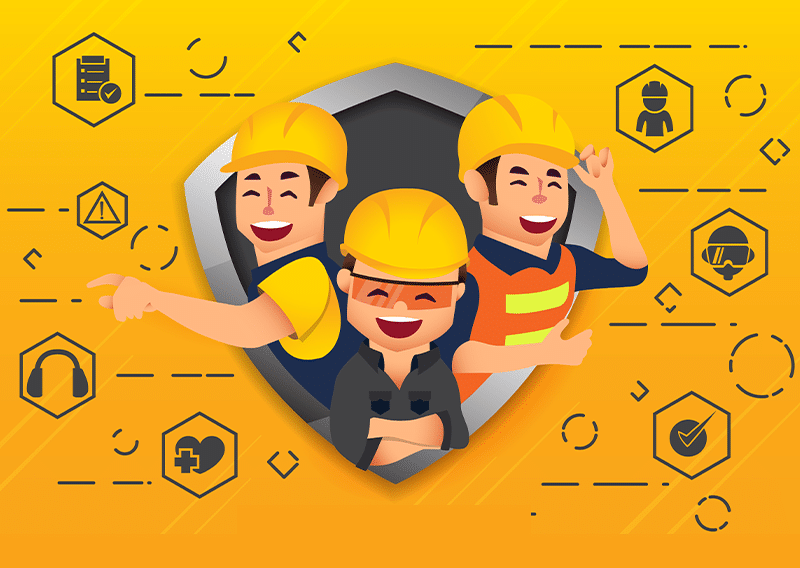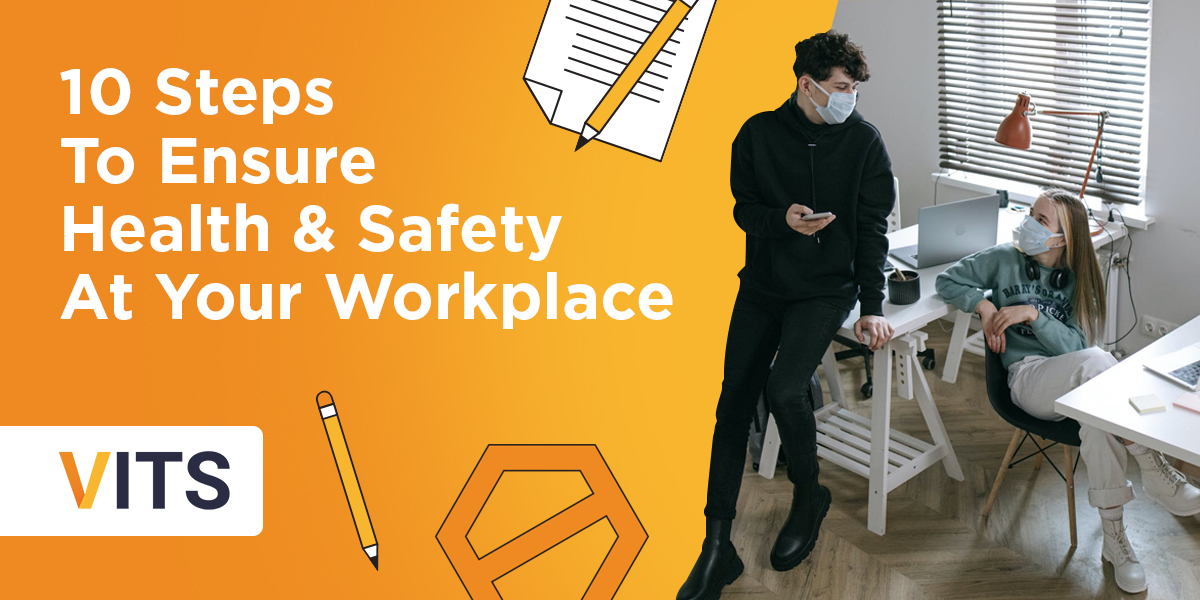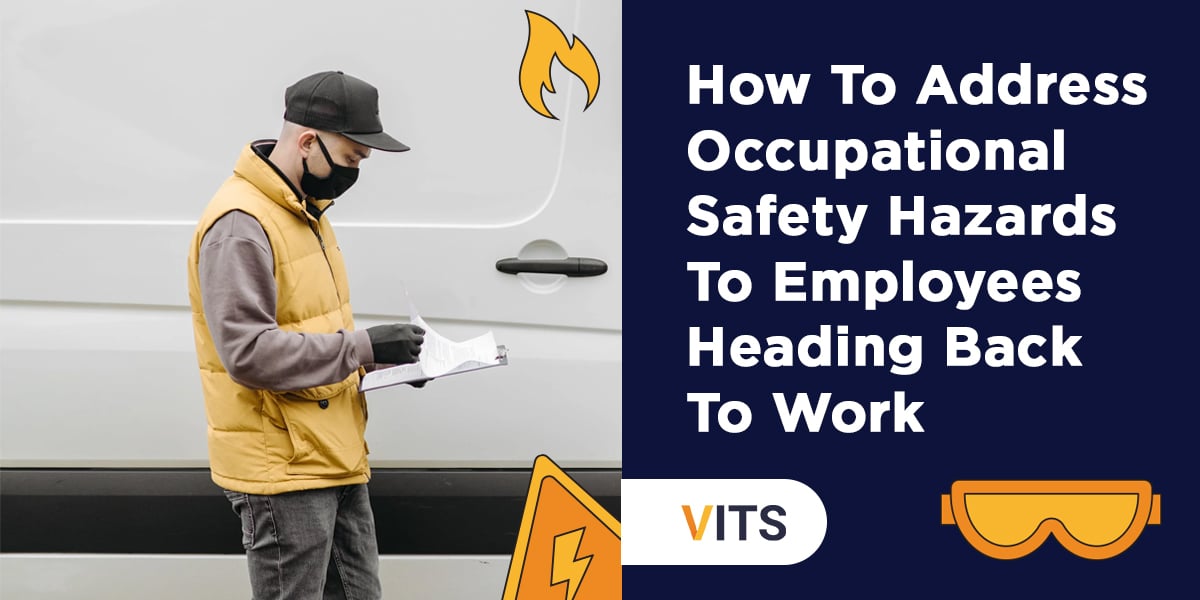Work injury costs topped £16.2 billion for 2018/19 in the UK alone. If you are a business owner, you know that you are at risk of becoming part of this statistic.
This is especially true if your business is not compliant with health and safety regulations.
Ask any Health and Safety specialist and they will tell you that the key to getting your business compliant is getting employees on board with health and safety compliance.
You can conduct all the training the guide books suggest, but the key is to bridge the gap between the rules on paper and their application in real life.
But how do you do that?
We know how. And after reading this post, you will too.
Employee Health and Safety Compliance
Following basic health and safety rules ensures your company and workplace are both compliant and safe.
But here’s an insider’s tip: It’s not always the simplest process. But do you want to make it a seamless process? How about cutting down on both costs and time? Of course you do.
Sign up for VITS now, it’s free for the first week. You can get first-hand experience seeing exactly how your business compliance is elevated with the powerful and intuitive platform.
Here’s a simple guide to offer extra insights into the essential basics for health and safety compliance.
While this guide contains a few aspects to include, this first one is one of the most critical: Create a Workplace Safety Culture.
1. Create a Safety Culture
The term safety culture is thrown around quite a lot these days. But what does it actually mean?
Safety needs to form a part of each moment in the workday, and safety needs to become a mindset. But the real question is: how to do this?
Here are Some Practical Tips:
- Consider how often you conduct training or talks on safety. Use Toolbox talks to ignite a weekly or even daily safety awareness among the team.
- Understand the underlying problems. Analyze the injuries that have occurred, and identify the weak spots. Develop a safety strategy to tackle any areas lacking.
- Analyze the workplace. Are there any hazards in the design of the space? Look for areas to improve.
- Use any weakness as a clear example for employees. This can bring safety training off the paper and into everyday life.
2. Health and Safety Training
Training shouldn’t just be run of the mill. To really get your employees compliant, you need to train them well.
3. Rewards
As simplistic as it sounds, rewards are a great way to encourage employees to be compliant with safety regulations.
A reward based system also encourages more engagement, upping overall safety culture in the workplace.
4. Appeal to Visual Appeal
Signs, labels, and other visual stimulations can be an effective and intuitive way to convey safety messages throughout the day.
You could depict certain safety hazards with cartoons to get the attention of employees.
Change these once a month or once a week, and use them to convey a safety theme. If you do weekly toolbox talks these go well with driving the safety feature home.
Use simple language and a bit of humor to keep the safety tip memorable.
The human brain remembers pictures easier than words, and the image can be recalled faster than the lengthy worded safety tip.
Even if the cartoon pictures make employees roll their eyes, it will still be memorable.
5. Keep it Tidy
The workplace should be kept in mint condition, clean and tidy. Mess attracts unnecessary accidents.
If boxes are lying around, stack them neatly up against a wall.
The cables and wiring should be neat. Ensure regular rounds are performed around the workplace to ensure the workplace stays danger free.
A good safety culture recognizes that simple things can be disastrous- just one cord out of place can cost the company.
One of the main issues facing cluttered workspaces is paperwork.
Using an online platform for health and safety compliance admin can eliminate the excessive need for paperwork, helping maintain a clean and clutter free workplace.
6. Perform Regular Machine and Tool Inspections
If you want to maintain a safe workplace, then you have to make sure workers are not only organized but have the right tools to do their job.
All equipment should be inspected regularly.
7. Incorporate R&R
Many workplace injuries result from repetitive motion injuries, which can be avoided with this simple tip.
While you don’t exactly have to provide a beach and cocktails, employees must be encouraged to rest and relax.
Encouraging stretch breaks is a simple aspect to implement that minimizes accidents and maximizes productivity.
If employees are engaged in physical labor, it is essential they are encouraged to rest and stretch and possibly work on a rotation basis.
8. Understand the Physical Demands
Understanding the physical strain a particular job can place on an employee’s muscles is imperative for maintaining health and safety.
Hiring a physiotherapist to analyze and explain the physical demands can help employers to have a simple but effective health and safety strategy for each job.
While it is an initial expense, just think of the cost of injuries that could result without this information.
9. Simplify the Process
Who wants to work on something that is painstaking, time-consuming, and has more admin than active engagement? Not many.
But, someone has to do it.
Health and Safety is a part of every single workplace, it is a universal theme for every employee and business owner to consider.
While it is not exactly the preferred conversation topic during afternoon tea, it is most certainly an essential workplace issue.
So, if you want it to be as seamless as possible, then you probably need some help with the admin.
Taking control of the time and effort is as simple as contacting VITS today to see how they can help you.
Book a demo for unique insights into your workplace’s health and safety.
Or, sign up for the regular (and free) events on LinkedIn where insider tips and tricks are shared.
Sure, employees must be compliant with health and safety regulations.
Proper time management and training can help with this. But, most importantly, the employer needs to create a safe environment for work.
This helps maximize productivity while minimizing hazards.
Use VITS online software to monitor policies, records and training to ensure you have all your health and safety boxes checked and compliant.







